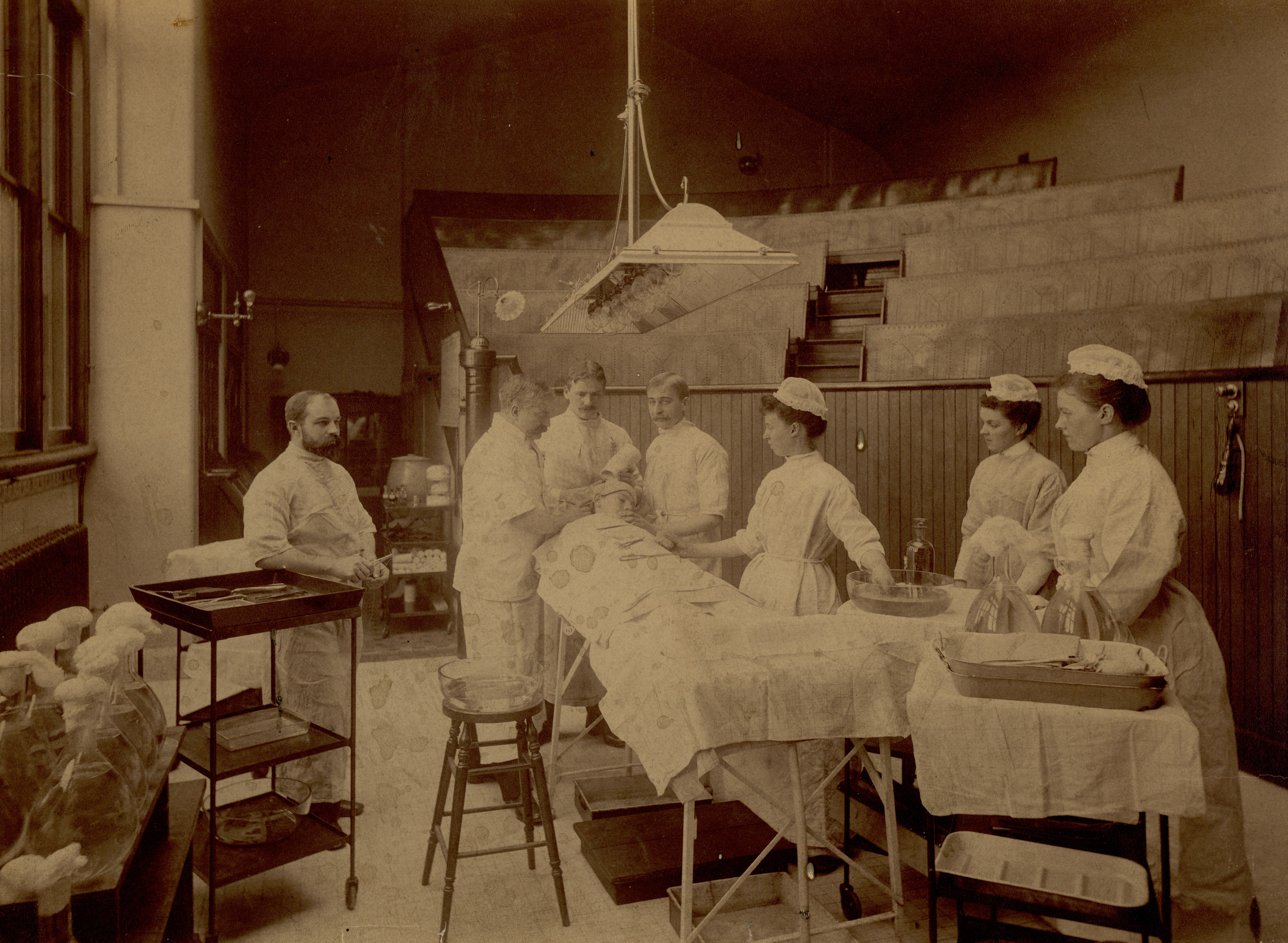By on October 19, 2020 - 1:52am

From a young age we are taught the importance of washing our hands to stop the spread of germs. The notion of killing bacteria with hand sanitizer and hand washing has become a largely mainstream concept today - especially important during the COVID-19 pandemic - however, this was not always the case. Until the late 1800s, many medical professionals did not wash their hands before, during, or after seeing patients! The concepts of antisepsis (killing bacteria with disinfectants) and asepsis (eliminating the presence of bacteria by hand washing) were only widely adopted at the turn of the 20th century.
Before the introduction of the “germ theory of disease” in the 19th century, miasmas (unhealthy vapors) were thought to be a primary cause of infections. Although physicians often did their best to care for patients, they were unaware that their unsanitary methods could contribute to infections and death. Whereas individuals who believed in miasmas claimed noxious air caused infection, proponents of germ theory argued that in fact bacteria and germs caused disease. This new hypothesis was highly controversial at the time, though it did inspire some in the scientific community to conduct experiments that explored this idea.
Dr. Louis Pasteur (1822-1895), a French chemist and biologist, demonstrated that microorganisms were responsible for spoiling liquids like wine and milk, but when these beverages were heated, the damage-inflicting microorganisms could be killed. This process was later named pasteurization. Pasteur’s discovery of beverage contamination led him to examine the relationship between microorganisms, diseases, and humans. He hypothesized that if the introduction of microorganisms to the human body could be limited, so too could the spread of infections. While this argument was dismissed by many, it did inspire British surgeon Dr. Joseph Lister (1827-1912.)
In an attempt to minimize exposure of microorganisms to open wounds, Lister adopted a rigid antiseptic protocol that required surgical wounds to be doused in carbolic acid and wrapped in clean linen lined with tinfoil to prevent evaporation of the antiseptic. These bandages were to be changed and the wound was to be cleaned with carbolic acid every few days. By using these techniques, Lister experienced a significant drop in severe infections amongst his patients, leading him to firmly believe that antiseptic techniques are the correct direction for medicine and patient care. It also affirmed his belief in germ theory and the importance of using disinfectants to kill germs.
Dr. Lewis Atterbury Stimson (1844-1917), a founding member of Cornell University Medical College (now Weill Cornell Medicine) and first Chief of Surgery at New York Hospital (now NewYork-Presbyterian Hospital), was a strong supporter of the works of Pasteur and Lister. Stimson went on to become a proponent of the germ theory of infection in the U.S. and of the lifesaving benefits of antisepsis in surgery. He eventually performed one of the first operations incorporating antisepsis techniques in the U.S. at the New York Hospital in 1876 using Lister's methods. Dr. Stimson’s enthusiasm for antisepsis technique is described in several letters to his brother Henry, which can be found in his papers preserved in the Medical Center Archives.
Lister’s carbolic acid and antisepsis practices led New York Hospital alumnus Dr. William Halstead (1852-1922) to advocate for asepsis techniques including handwashing. Halstead recognized the importance of hand washing and its impact on minimizing the spread of bacteria. Building upon the work of Pasteur and Lister, Halstead’s contributions to germ theory and standardization of hand washing before surgery helped to drastically change medical standards, which are still practiced today.
Photograph: P00387, Operating room at the Second New York Hospital.
This blog is part of a new series from the Medical Center Archives of NewYork-Presbyterian/Weill Cornell Medicine entitled “Courage Under Crisis,” demonstrating the medical center’s role in previous crises. Due to current social distancing recommendations, research for this series relies in large part on digitized archival publications and images available online, as well as reliable secondary sources such as the 2018 publication In Occasion of the 120th Anniversary, 1898 – 2018: The History of the Department of Surgery at Weill Cornell Medicine and NewYork Presbyterian Hospital released by the Department of Surgery, Kennedy MD, Michael T. A Brief History of Disease, Science, & Medicine (Mission Viejo: Asklepaid Press, 2004), and Porter, Roy. The Greatest Benefit to Mankind: A Medical History of Humanity (New York: W.W. Norton & Company, 1999).
Blog Category: Courage Under Crisis





